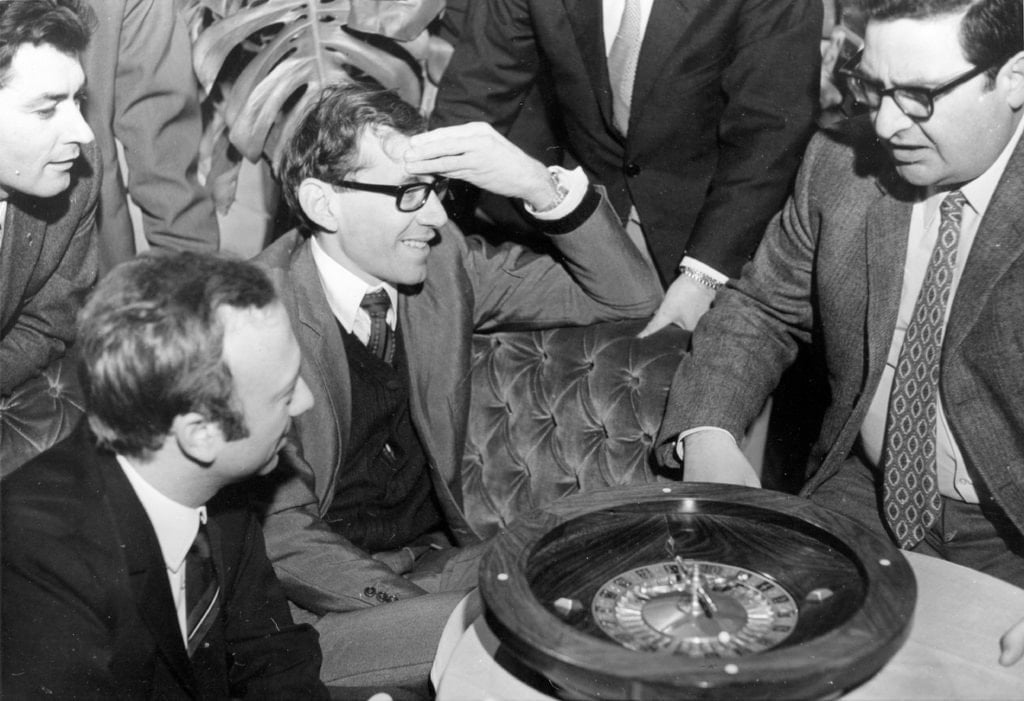The Man Who Beat the Wheel – The Extraordinary Story of the Professor Who Won a Fortune on Roulette

Roulette is a game that has fascinated and intrigued casino gamblers for more than 200 years.
And for as long as that little white ball has circled that wheel, people have dreamed of coming up with a clever way to beat the odds and make a fortune.
For all the brash talk on social media about roulette systems that “really work”, it’s an unbreakable statistical fact that over time, the house will always win.
Always.
Always?
Let us tell you the story of Dr Richard Jarecki, who proved that once in a lifetime a genius comes along and actually does beat the wheel.

Why it should be impossible to beat the house at roulette
It’s a simple matter of mathematics and the key to it is the zero – one on European tables, two if you’re in the United States.
When your number comes up, you’re paid out at odds of 35-1. But the actual odds are 36-1 – or 37-1 in the USA, where there is a double zero.
Your payout – on exact number, groups of numbers, red or black, high or low – will always reflect that slightly lower probability. That means the house will, over time, have that edge.
Statistically, therefore, the casino cannot be beaten by a system that relies on the numbers.
But Jarecki’s system was far more insightful than that.
The child prodigy who grew up with a passion for casinos
Richard Jarecki was born in Germany in 1931 but fled with his parents to the USA just before World War II and settled in New Jersey.
He found he was gifted with a brilliant mind that could retain numbers and statistics. He used his talent to win money off his friends at card games.
Even after he became a doctor, his passion was for casinos, and in particular the game of roulette. He became obsessed with it, convinced he could find a way to beat the odds.
And in the early 1960s, he did.

The wheels always turned – but they didn’t move
Jarecki’s scheme was ingenious, and it required an extraordinary amount of research, but it was rooted in a simple observation.
He noticed that casinos regularly replaced their cards and dice with fresh sets – but the big, heavy, costly roulette wheels stayed in place, sometimes for decades.
Over time, Jarecki calculated, they would develop tiny chips, dents and scratches that might cause certain numbers to come up more frequently than they could.
The only way to test the theory was to manually record the results of thousands of spins and analyze them for inconsistencies.
Not imitation, but perfection
The concept of wheel tracking was not new. Joseph Jagger, an Englishman, pioneered the strategy in the 1880s.
Jagger won £80,000, an enormous sum of money at the time, and broke the bank at Monte Carlo – although it is not believed the song of the same name was written for him.
Other people who had used a similar technique were Albert Hibbs in 1947 and Helmut Berlin in 1950. But Jarecki was convinced he could perfect the system.
After gathering months of data, he scraped together $100, his savings, and turned it into $5,000 in a matter of hours.

The conquest of Europe
In the mid-1960s Jarecki, by now in his mid-thirties, moved to Germany to study at the University of Heidelberg.
Alongside the progess of his medical career, the switch to Europe also helped his roulette exploits.
European roulette wheels had 37 slots instead of the 38 of the USA, so the house edge was 2.7% rather than 5.26%. And the venerable, established casinos there used old wheels.
Jarecki and a team of helpers scouted wheels at casinos all over Europe, sometimes recording as many as 20,000 spins in a month.
When he finally got serious and put his theory into practice, he turned $25,000 into $625,000 in the space of six months in 1964.
Striking it rich in San Remo
Jarecki bought a luxury apartment in San Remo, an Italian coastal town with an old casino – and old roulette wheels.
One night in 1968 Jarecki visited and won $48,000 over the next three days. He came back eight months later and won $192,000 over a weekend.
He was banned from the casino – and when the suspension expired he returned and won another $100,000.
Ultimately, it was cheaper for the casino to replace all 24 of its wheels, at huge expense. Its director called Jarecki “a menace to every casino in Europe”.
Jarecki responded with the wonderful remark: “If the casino directors don’t like to lose, they should sell vegetables.”

Could it happen again?
Once you know Jarecki’s story and see the premise upon which he based his theory, it’s tempting to wonder if it could be done again.
However, casinos now invest in new wheels on a regular basis and they inspect them closely for defects.
Meanwhile, manufacturers of wheels have upgraded their processes to ensure their products are completely free of any potential bias.
So the answer is an emphatic no.
As for Jarecki, after making $1.25million between 1964 and 1969 he went back to New Jersey.
He became a commodities broker and reputedly earned 10 times as much in the years ahead.
Jarecki retired to Manila and died there in 2018 aged 86.
Sources:
https://thehustle.co/professor-who-beat-roulette/
https://en.wikipedia.org/wiki/Joseph_Jagger
https://www.nytimes.com/2018/08/08/obituaries/richard-jarecki-doctor-who-conquered-roulette-dies-at-86.html


